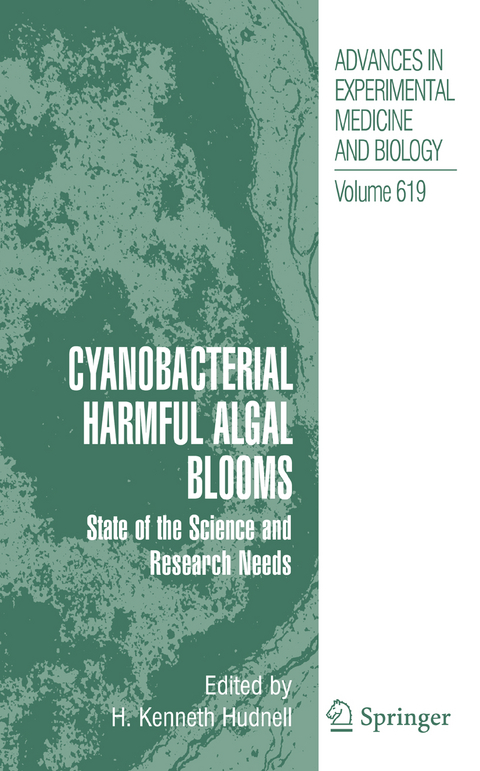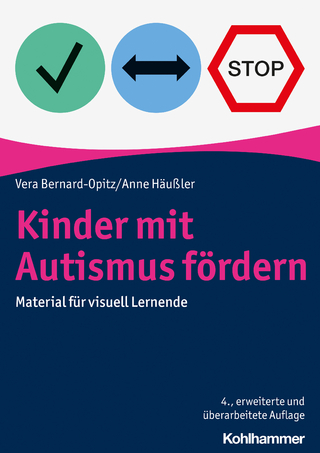
Cyanobacterial Harmful Algal Blooms: State of the Science and Research Needs
Springer-Verlag New York Inc.
978-1-4939-3876-6 (ISBN)
Scientists have called cyanobacteria the origin of plants, and have credited cyanobacteria with providing nitrogen fertilizer for rice and beans. But blooms of cyanobacteria are not always helpful. When these blooms become harmful to the environment, animals, and humans, scientists call them cyanobacterial harmful algal blooms (CyanoHABs).
Freshwater CyanoHABs can use up the oxygen and block the sunlight that other organisms need to live. They also can produce powerful toxins that affect the brain and liver of animals and humans. Because of concerns about CyanoHABs, which can grow in drinking water and recreational water, the U.S. Environmental Protection Agency (EPA) has added cyanobacteria to its Drinking Water Contaminant Candidate List. This list identifies organisms and toxins that EPA considers to be priorities for investigation.
Reports of poisonings associated with CyanoHABs date back to the late 1800s. Anecdotal evidence and data from laboratory animal research suggest that cyanobacterial toxins can cause a range of adverse human health effects, yet few studies have explored the links between CyanoHABs and human health.
Humans can be exposed to cyanobacterial toxins by drinking water that contains the toxins, swimming in water that contains high concentrations ofcyanobacterial cells, or breathing air that contains cyanobacterial cells or toxins (while watering a lawn with contaminated water, for example). Health effects associated with exposure to high concentrations of cyanobacterial toxins include:
stomach and intestinal illness;
trouble breathing;
allergic responses;
skin irritation;
liver damage; and
neurotoxic reactions, such as tingling fingers and toes.
Scientists are exploring the human health effects associated with long-term exposure to low levels of cyanobacterial toxins. Some studies have suggested that such exposure could be associated with chronic illnesses, such as liver cancer and digestive-system cancer.
This monograph contains the proceedings of the International Symposium on Cyanobacterial Harmful Algal Blooms held in Research Triangle Park, NC, September 6-10, 2005. The symposium was held to help meet the mandates of the Harmful Algal Bloom and Hypoxia Research and Control Act, as reauthorized and expanded in December 2004. The monograph will be presented to Congress by an interagency task force.
The monograph includes:
1) A synopsis which proposes a National Research Plan for Cyanobacteria and their Toxins;
2) Six workgroup reports that identify and prioritize research needs;
3) Twenty-five invited speaker papers that describe the state of the science;
4) Forty poster abstracts that describe novel research.
An Overview of the Interagency, International Symposium on Cyanobacterial Harmful Algal Blooms (ISOC-HAB): Advancing the Scientific Understanding of Freshwater Harmful Algal Blooms.- A Synopsis of Research Needs Identified at the Interagency, International Symposium on Cyanobacterial Harmful Algal Blooms (ISOC-HAB).- Occurrence of Cyanobacterial Harmful Algal Blooms Workgroup Report.- A world overview — One-hundred-twenty-seven years of research on toxic cyanobacteria — Where do we go from here?.- Toxic Cyanobacteria in Florida Waters.- Nebraska Experience.- Cyanobacterial Toxins in New York and the Lower Great Lakes Ecosystems.- Occurrence Workgroup Poster Abstracts.- Causes, Prevention, and Mitigation Workgroup Report.- Nutrient and other environmental controls of harmful cyanobacterial blooms along the freshwater–marine continuum.- Global warming and cyanobacterial harmful algal blooms.- Watershed management strategies to prevent and control cyanobacterial harmful algal blooms.- Cyanobacterial toxin removal in drinking water treatment processes and recreational waters.- Causes, Mitigation, and Prevention Workgroup Posters.- Cyanotoxins Workgroup Report.- Toxin types, toxicokinetics and toxicodynamics.- The genetics and genomics of cyanobacterial toxicity.- Determining important parameters related to cyanobacterial alkaloid toxin exposure.- Toxins Workgroup Poster Abstracts.- Analytical Methods Workgroup Report.- Cyanotoxins: sampling, sample processing and toxin uptake.- Field methods in the study of toxic cyanobacterial blooms: results and insights from Lake Erie Research.- Conventional laboratory methods for cyanotoxins.- Emerging high throughput analyses of cyanobacterial toxins and toxic cyanobacteria.- Analytical Methods Workgroup Poster Abstracts.- HumanHealth Effects Workgroup Report.- Health effects associated with controlled exposures to cyanobacterial toxins.- Cyanobacterial poisoning in livestock, wild mammals and birds – an overview.- Epidemiology of cyanobacteria and their toxins.- Human Health Effects Workgroup Poster Abstracts.- Ecosystem Effects Workgroup Report.- Cyanobacterial toxins: a qualitative meta–analysis of concentrations, dosage and effects in freshwater, estuarine and marine biota.- Cyanobacteria blooms: effects on aquatic ecosystems.- Ecosystem Effects Workgroup Poster Abstracts.- Risk Assessment Workgroup Report.- Effective doses, guidelines & regulations.- Economic cost of cyanobacterial blooms.- Integrating human and ecological risk assessment: application to the cyanobacterial harmful algal bloom problem.- Toxin mixture in cyanobacterial blooms – a critical comparison of reality with current procedures employed in human health risk assessment.
| Erscheinungsdatum | 24.07.2016 |
|---|---|
| Reihe/Serie | Advances in Experimental Medicine and Biology ; 619 |
| Zusatzinfo | XXIV, 950 p. |
| Verlagsort | New York |
| Sprache | englisch |
| Maße | 155 x 235 mm |
| Themenwelt | Medizin / Pharmazie ► Medizinische Fachgebiete ► Neurologie |
| Medizin / Pharmazie ► Studium | |
| Naturwissenschaften ► Biologie ► Humanbiologie | |
| Naturwissenschaften ► Biologie ► Zoologie | |
| ISBN-10 | 1-4939-3876-2 / 1493938762 |
| ISBN-13 | 978-1-4939-3876-6 / 9781493938766 |
| Zustand | Neuware |
| Haben Sie eine Frage zum Produkt? |
aus dem Bereich


